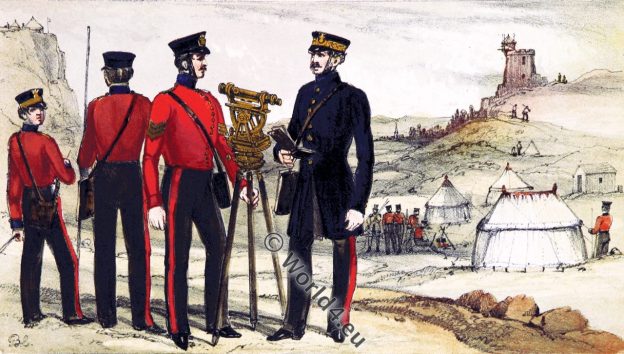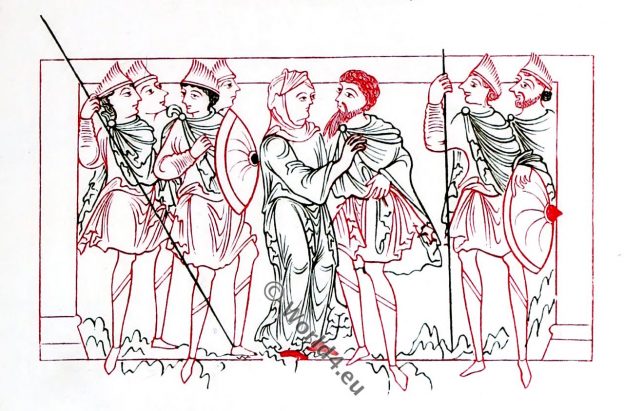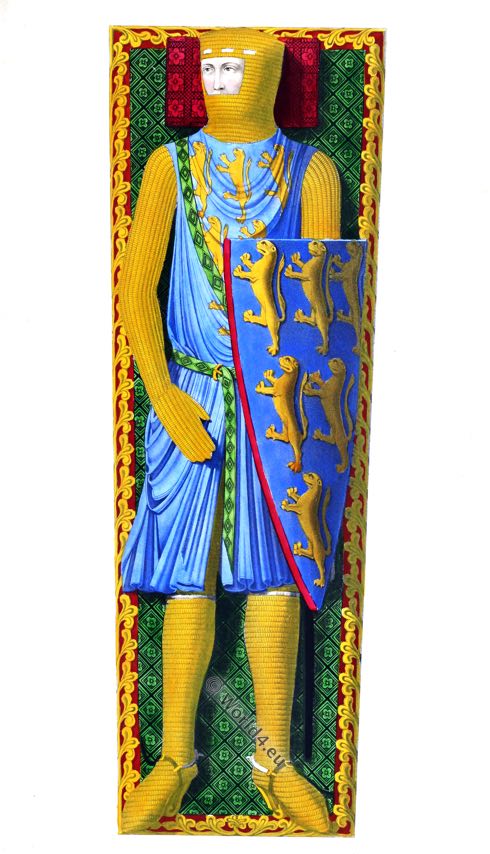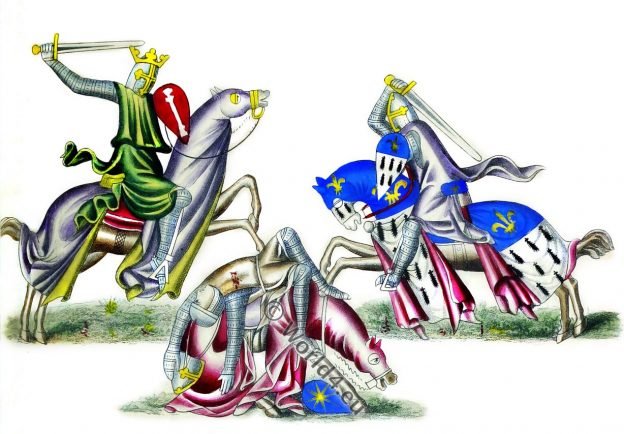The Queen’s Own Regiment of Dorset Yeomanry Cavalry
Category: Military
The Border Regiment. British Army 1893.
The Border Regiment (34th & 55th Foot)
The Garter. Orders of Knighthood.
A Knight of the Order of the Garter. British order of chivalry. The accompanying plate represents the dress of a Knight of the Garter about the time of Edward IV. or Richard III.
Painted glass. Gilbert de Clare, 5th Earl of Gloucester
Gilbert de Clare, Earl of Gloucester of the name, was one of the principal barons who took up arms against King John. The royal line of the Plantagenets.
Royal Sappers and Miners. Working Dress 1854.
Royal Sappers and Miners. Working Dress 1854.
Spanish warriors, jongleurs, minstrels in the 11th century.
The figures which form our plate represent Spanish warriors of the latter part of the eleventh century, and are interesting on account of their remarkable resemblance to the Anglo-Norman soldiers on the celebrated Bayeaux Tapestry.
Illustrations of Prudentius. Anglo-Saxon civil and military costume.
Prudentius is the most important Christian poet of late antiquity. Prudentius was very popular in the Middle Ages. There are more than 300 manuscripts, the oldest one from the 6th century.
The Black Prince. Edward of Woodstock, Prince of Wales.
The portrait was probably made about the time of the battle of Poitiers
Effigy of William Longespée, 1st Earl of Salisbury. England 13th century.
The son of King Henry II. by his celebrated mistress, Fair Rosamond. Much of romantic interest is attached to the name of Longuespee.
Knights in combat. The warlike machines. England 13th century.
The warlike machines. Our wood-cuts represent some of the instruments used, during the middle ages, in carrying on sieges.










